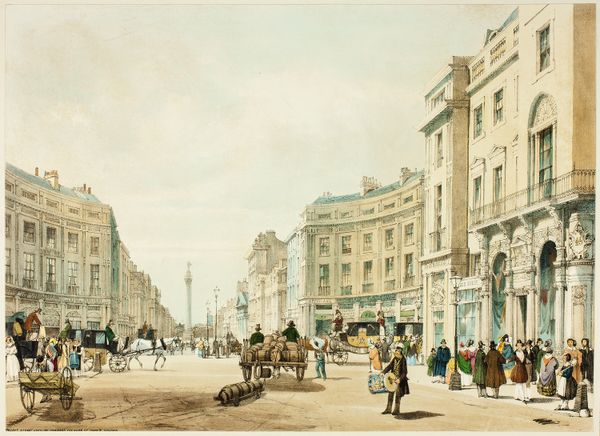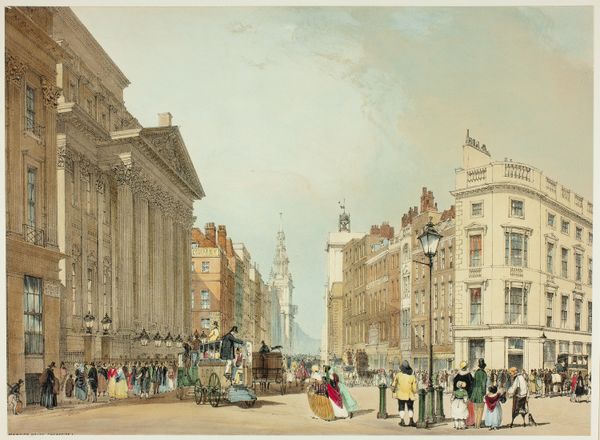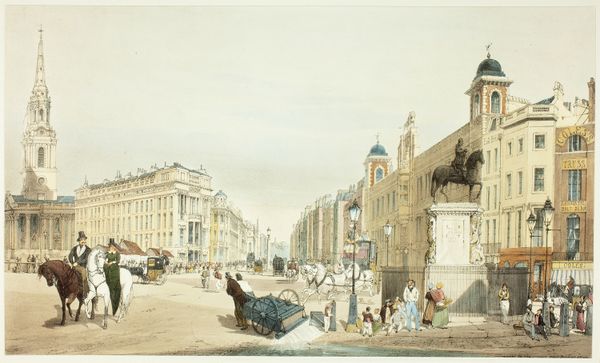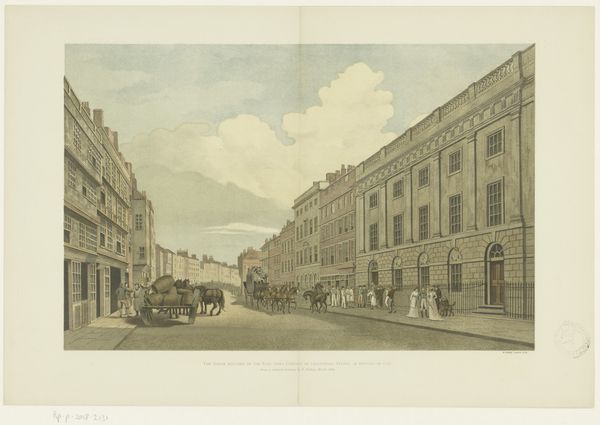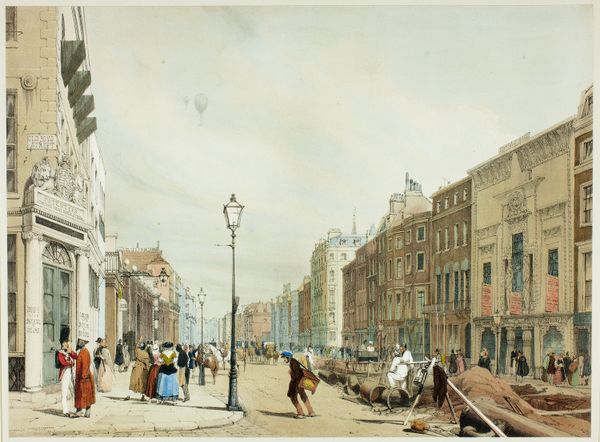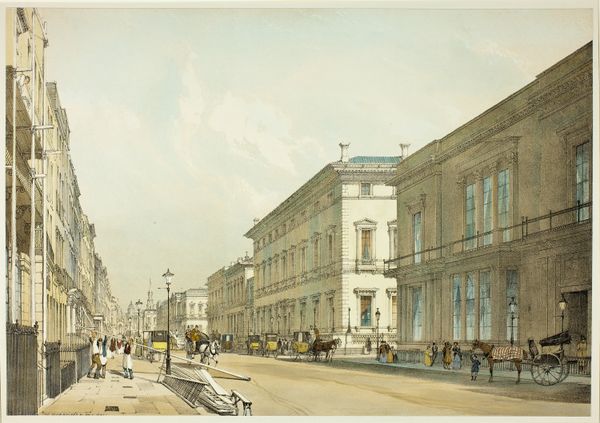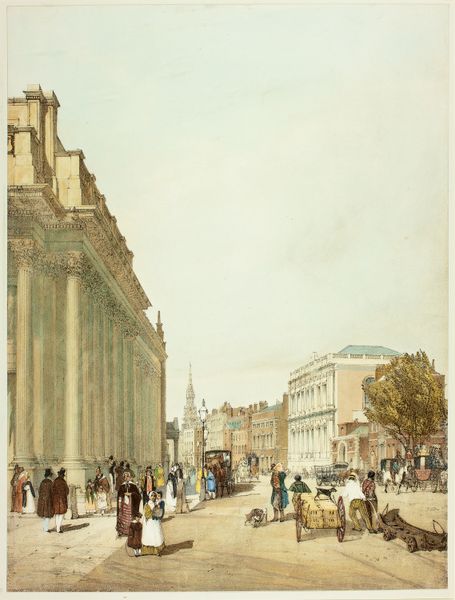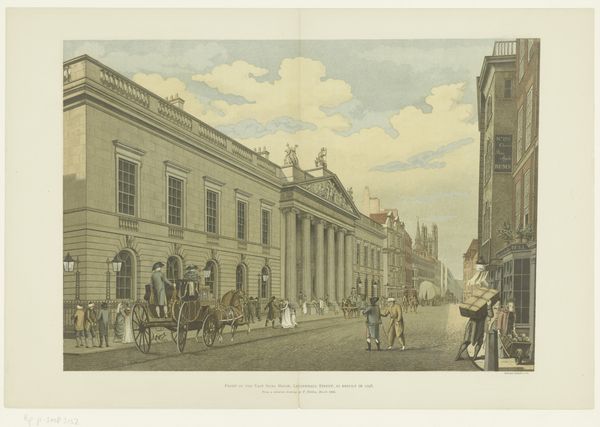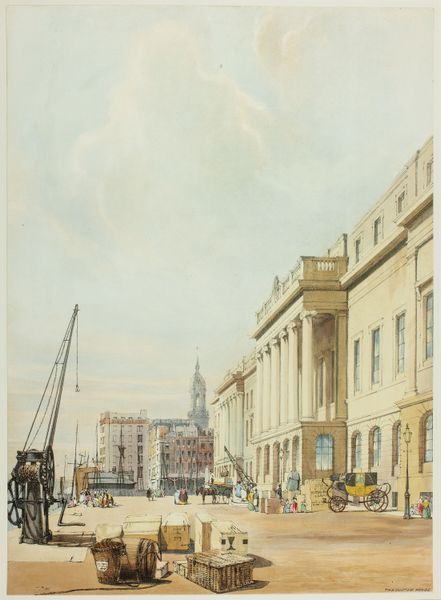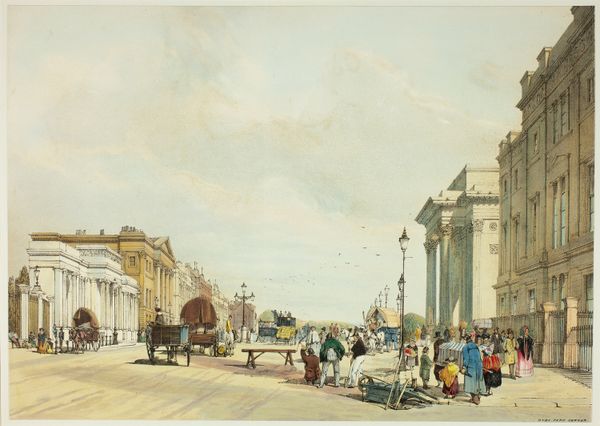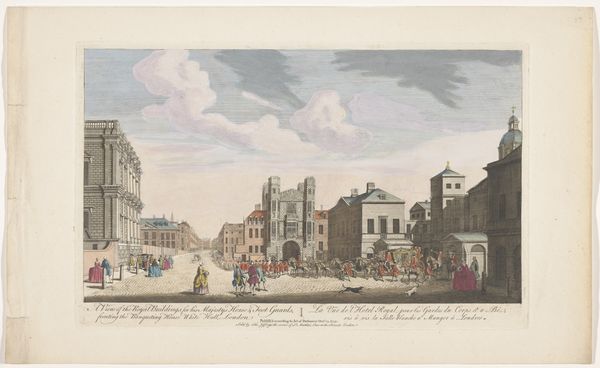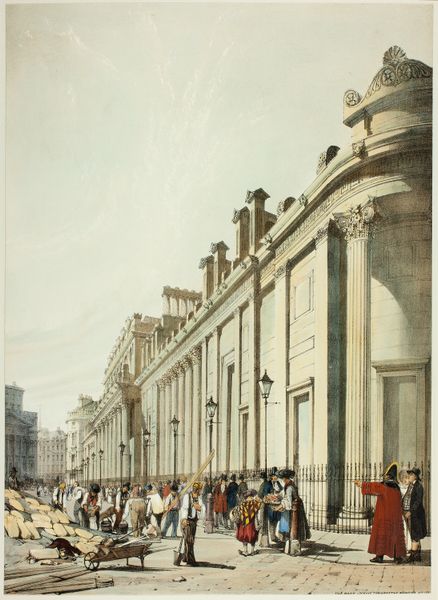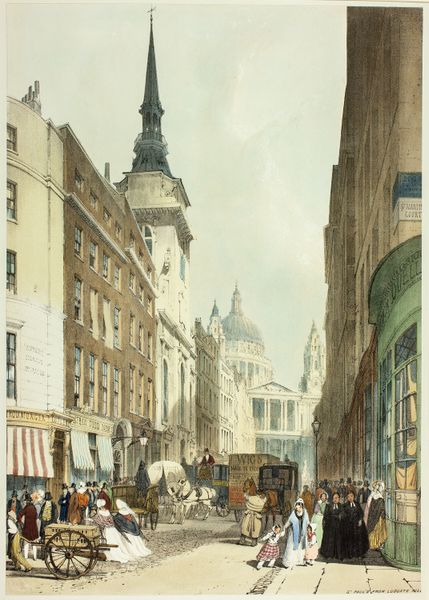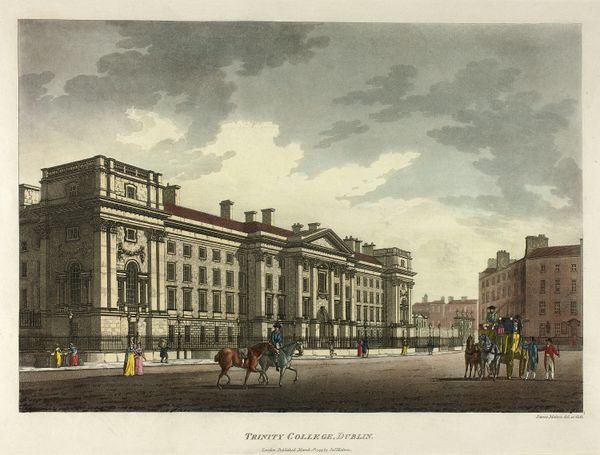
Regent Street Looking Towards the Quadrant, plate eighteen from Original Views of London as It Is 1842
0:00
0:00
drawing, lithograph, print, paper
#
drawing
#
cityscape photography
#
lithograph
# print
#
landscape
#
paper
#
romanticism
#
cityscape
#
genre-painting
Dimensions: 302 × 420 mm
Copyright: Public Domain
Curator: I find this image remarkably detailed. This lithograph is titled "Regent Street Looking Towards the Quadrant, plate eighteen from Original Views of London as It Is," created by Thomas Shotter Boys in 1842. It’s part of a series capturing London’s urban landscape in the mid-19th century, and it currently resides here at the Art Institute of Chicago. Editor: It has such a busy, vibrant energy. A romantic snapshot, perhaps? The soft colours, all those people… it's teeming with a social pulse but also suggests the stark contrasts between the classes occupying that shared space. Curator: Exactly! Shotter Boys wasn't merely documenting architecture, but also illustrating the burgeoning social landscape of London. He paid particular attention to how these grand structures played host to everyday life and the performances of status. The grand architecture emphasizes the established order, doesn't it? Editor: Yes, and within that established order, there’s the performance. Note how individuals are rendered, their attire broadcasting economic status. The buildings might be stone and permanence, but the street becomes this vibrant, contested arena. Where and how does the architecture enable and also constrain possibilities, interactions and expression? I can feel its political relevance, the silent conflicts bubbling just under the surface. Curator: Indeed. It is difficult to miss the political currents, particularly knowing that the print was part of a larger project aiming to capture the essence of London as it modernized. His deliberate composition makes this lithograph more than a mere visual record. The city as a site of inequality. Editor: Well, thanks to artists like Thomas Shotter Boys and their critical gaze, we can have a conversation like this today, challenging assumptions about progress and societal structures in their historical context. These are far more than simple romantic cityscapes; they're loaded social documents! Curator: It is work that continues to be important today, allowing us to consider our present moment within the larger arc of urbanization and its social ramifications. Editor: Right, I’m seeing things that still resonate, still provoke, still demand we ask those uncomfortable questions. I never expected such a beautiful work to hold such sharp insights.
Comments
No comments
Be the first to comment and join the conversation on the ultimate creative platform.
